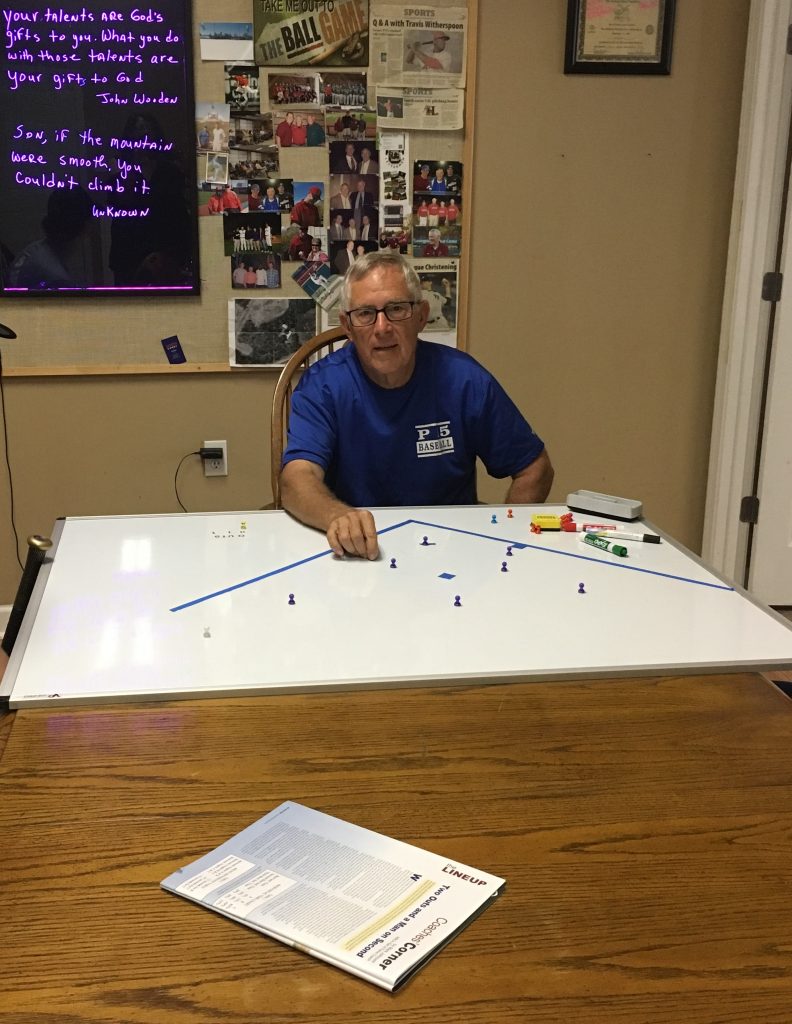
When coaches recruit, they seek out talent and skill, and put a premium on players who are ‘competitive.’ However, if you ask coaches to describe what a competitive player actually looks like, you might get a lot of different answers.
As hard as it is to put a finger on exactly what a competitive player is, it is even harder to explain what a competitive coach looks like. To this end, I did some research into the topic by asking some coaches and former coaches that I admire the simple question, “What does a competitive coach look like?”
Competition starts for the competitive coach when his alarm goes off in the morning. He competes to become a better man, son, father, husband, grandfather, friend, coach and servant of God. His competes against himself, with the primary goal of becoming a better on a daily basis. The mirror is your measuring stick.
The competitive coach knows what this type of “winning” means to him and makes that the foundation of his efforts. He is intentional and meticulous in preparation, and makes every attempt to eliminate as many surprises in the actual competition as he can. Competitive coaches gather as much information as they can on opponents; it takes time and effort to prepare a scouting report.
The competitive coach never stops coaching (teaching) in a game. The scoreboard is irrelevant – their body language should look the same they are winning 10-0 or losing 10-0. Competitive coaches enjoy good competition, which ultimately will bring out the best in him and his team. He may be defeated on the outside (scoreboard), but never on the inside.
The competitive coach knows that his players are puzzle pieces, each taking a unique shape. Talent and skill determine part of the puzzle piece, which is the easy part to figure out. The challenge is figuring out the type of motivation that each player requires. The competitive coach has to develop a personal relationship with each player. He must dedicate specific times to learn and know the size and shapes of his puzzle pieces. This is extremely hard and time-consuming work, but it is necessary. Jamming a square peg into a round hole on a team is a hard thing to overcome. Players also have to work to fit into their team ‘puzzle.’
A radar gun and a stopwatch are great tools for measuring tangible skills, but they are useless in measuring the intangibles of a player. With a stopwatch, for example, there is instant feedback and judgment, which is the opposite of how you build a relationship. Building relationships is a long, ‘brick-by-brick’ process, but it is absolutely worth the time and effort.
A competitive coach earns respect from his team with the effort he gives every day. He becomes a role model, and his effort becomes contagious and elevates the whole team. His joy is not dependent on how much he is liked or appreciated by his players right in the present moment, or even the next season. He understands that gratitude is a grown man’s virtue, and that his players are (likely) not fully mature adults yet. Ten years down the road when maturity takes over and that gratitude kicks in, players are able to see their coaches as a guiding light in their development as men. That is when the letters, calls and invitations to weddings start to happen. This is the ultimate payoff for your work as a best effort and competitive coach.
So to all the young coaches, hang in there. There will be gratitude at the end of the tunnel for all of your hard work, because the love usually comes later in this profession.
Hopefully, this article will encourage you to really contemplate what being a competitive coach means to you, if you truly aspire to be one, and what “compete” means to you specifically, the competitive coach. And as a 72-year old coach still trying to figure it out myself, good luck to you!
Dr. Wallie Jones is a retired dentist, 25 year American Legion baseball coach and ABCA member for 28 years. He also owns and helps operate a “free” Christian based baseball school that concentrates on building boys and men first and players second.